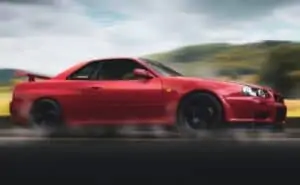Being an off-road riding enthusiast, you must know how vital a winch is for you and your vehicle’s safety.
No matter how efficient you are, mistakes are almost bound to happen that may stall your car in the middle of nowhere. And this is when a winch will come in handy.
Just having an anchoring point will suffice for using a winch. But, have you ever tried to find out how to winch backwards?
What if you need to reverse when you are stuck? The only way in such cases is to make the winch go back, which isn’t rocket science if you know how to do it.
How Does a Winch Work?
Before you jump into the techniques of backward winching, first you need to know how a winch works and all about its components.
#1. Drum
A winch comes with a drum, which is actually a cylinder. It’s a horizontal cylinder that has a wire with it. The wire is adequately wrapped around the cylinder, which doesn’t let it tangle. When you wind the wire, you will find the drum turning in a circular line horizontally.
#2. Cable Wire
As you already know, the drum has wire wrapped with it. This wire could be a chain or made of steel. It can come with a length ranging from 9 to 36 meters. These wires are pretty durable and can withstand heavy weight even in adverse environments.
#3. Winch Motor
All winches come with motors that power the winches. They mostly run on batteries. You will find both electric and hydraulic motors depending on the models. Manual winches are also available, but they are less efficient and slow.
#4. Gear Train and Gear Casing
The motor of the winch generates power. The gear train and gear casing turn this power generated from the motor into pulling energy.
How to Winch Backwards: All You Need to Know
Now that you know all about the parts of a winch and how they work, let’s move on to winching your car backward.
It’s not quite unusual to face the need for winching your vehicle backward. In fact, off-road drivers often require their winches to go back.
There are two ways you can do it. And today, we will explore everything about both of these strategies.
Direct Winching
The first method that you can try for winching backward is direct winching. It’s pretty simple and easy to execute. We will explain the whole process in small steps here.
#1. Look for an Anchoring Point
At first, you have to find an anchoring point for winching. This anchoring point has to be stable enough for holding the weight during winching.
#2. Lever Disengagement
As the next step, you have to let the cable go by disengaging the lever. You will find the lever closer to the winch. Labels like “Disengage” and “Free Spool” could be attached to the lever. You have to turn the lever to “Disengage” to release the cable manually.
#3. Pulling the Cable Out
Now, you have to pull out the cable from the winch. Make sure you don’t pull it too hard. Otherwise, you will end up with unwanted slacks.
#4. Running the Cable
At this point, you have to grab the cable and run it under your car. Remember to check if there’s anything under the vehicle that can cause damage to the cable.
#5. Engage the Lever
You will find the label “Engage” on your winch. Turn the lever to it, and it will stop cable releasing.
#6. Winch Your Vehicle
And now, it’s time to winch your vehicle backward. You can winch your car following the anchoring point. As you need it to go backward, the cable will pull the car towards that direction and get tighter as it stretches.
Disadvantages of Direct Winching
Although direct winching is simple and quicker, it comes with some disadvantages too. If your vehicle isn’t designed for such winching, you will end up damaging it.
Also, direct winching causes a lot of friction. So, it’s not a recommended method if you can’t find a good anchoring point.
Snatch Block Winching
This method is a bit complicated but more efficient. Snatch block winching leaves little room for causing damage to your vehicle.
#1. Look for Three Points of Anchoring
To follow this method, you have to look for three anchoring points first. They should be durable enough to handle the weight of your car. Also, find trees for use in the same method.
#2. Release the Cable by Disengaging the Lever
Among the two labels, “Disengage” and “Free Spool,” turn the winch’s lever to “Disengage.” You will be able to pull the cable manually in this manner.
#3. Pull the Cable Out
Now, keep pulling the cable out as it goes, but you will create unwanted slacks if you pull too hard.
#4. Wrap Protectors of Trunks
A trunk protector is a strap made of nylon. It has a loop at each of its ends. All the anchoring points should have trunk protectors wrapped around them.
#5. D-Shackle Attachment
Now, you have to attach D-shackle to all of the three straps. Make sure to do that carefully to make the attachment strong.
#6. Snatch Block Hooking
Leaving the final anchoring point, take two snatch blocks and attach them to the D-shackle.
#7. Snatch Block Hooking to the Rear End
The third snatch block that you left has to be attached to the rear end of the vehicle. Make sure to find a good place for the snatch hooking.
#8. Winch Cable Wrapping
You will be able to open the casing of the winch pulley block by removing the screw. After you do it, wrap the cable around the pulleys.
#9. Hooking to the Third Point
You have already stuck a D-shackle to the third anchoring point. Now, just attach the cable to the third anchoring point’s D-shackle.
#10. Engage the Lever
When you have finished all the previous steps, make sure to turn the winch to “Engage.” It will stop the cable from coming out further.
#11. Winching Backwards
If you have done everything correctly, you will be able to winch your car backward successfully.
Disadvantages of Snatch Block Winching
Although snatch block winching is a more durable type of winching, people often find it overwhelming. If you don’t perform any of the steps correctly, you will end up having an improper winching.
Frequently Asked Questions
#1. Is it possible to winch a vehicle backward using a front winch?
Ans. Yes, you can do it. But, you have to create an adequate amount of mechanical advantage for overcoming the front-pulling force.
#2. Where should I stand while I winch the car?
Ans. Never stand between the anchoring point and the vehicle. Either stand behind the anchoring point or the car while you winch it.
#3. Is getting a winch worth it?
Ans. If you often drive on off-roads, then getting a winch is a must! It ensures your vehicle’s safety in adverse situations.
#4. How long should you run a winch?
Ans. You should run your winch for 60 seconds and give it a rest for 90 seconds.
Conclusion
Driving through rough terrains often requires unique preventive measures. Only having a winch isn’t adequate if you don’t know its use.
Moreover, learning how to winch backwards is crucial to make sure you are safe in your adventures. Use your tools properly, and be safe out there!



![Read more about the article A Beginner’s Guide To Off-Roading [How To Have The Best Experience]](https://autopartsguideline.com/wp-content/uploads/2021/11/begineers-guide-to-off-roading-300x205.webp)
